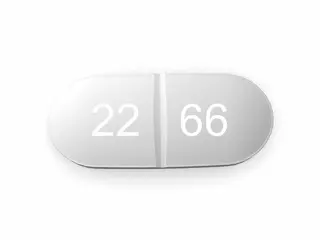Muscle Relaxant
Find effective muscle relaxants to relieve pain and stiffness quickly. Shop trusted brands for fast-acting, safe muscle relaxation and improved comfort.
Muscle relaxants are medications designed to relieve muscle spasms, stiffness, and discomfort. They work by calming the nervous system or directly relaxing the muscles. These medicines are commonly prescribed for conditions like back pain, neck pain, injuries, multiple sclerosis, and spasticity caused by neurological disorders.
Among the popular muscle relaxants are baclofen, Robaxin, and Zanaflex. Each has unique properties and applications. Understanding their effects can help users select the right medication with the guidance of a healthcare professional.
Baclofen is a widely used muscle relaxant. It mainly treats spasticity related to multiple sclerosis and spinal cord injuries. Baclofen works by acting on the central nervous system. It reduces the frequency and severity of muscle spasms. The drug is available in tablet form and can be taken orally. Many patients report improvement in mobility and decreased pain after using baclofen. Common side effects include drowsiness, dizziness, and weakness. Most users find the benefits outweigh these mild effects. Baclofen requires dosage adjustments based on individual response.
Robaxin, also known by its generic name methocarbamol, is another muscle relaxant often prescribed for muscle pain and injuries. It acts centrally to depress the nervous system. Robaxin helps ease muscle tension and allows better movement. Patients often use it for short-term relief following trauma or surgery. It is less sedating compared to some other muscle relaxants. Some users experience nausea, headache, or blurred vision. Taking Robaxin with food can reduce stomach upset. The drug is typically recommended for short courses to avoid dependency.
Zanaflex, with the generic name tizanidine, is a powerful muscle relaxant. It is effective in managing spasticity due to conditions like multiple sclerosis, spinal cord lesions, or stroke. Zanaflex works by blocking nerve impulses that cause muscles to tighten. It acts quickly and has a short duration, which allows flexible dosing. Many users appreciate its fast relief from muscle spasms. However, Zanaflex can cause low blood pressure, dry mouth, and tiredness. Liver function should be monitored during prolonged treatment. Patients are advised to avoid alcohol while on this medication to prevent increased sedation.
Comparing these three medications: Baclofen is preferred for chronic spasticity and long-term management. Robaxin is ideal for acute muscle pain and injury-related spasm. Zanaflex offers rapid relief but requires careful monitoring. All require careful medical supervision to minimize risks and ensure proper usage.
Muscle relaxants are not suitable for everyone. They should not be mixed with alcohol or certain sedatives due to risk of excessive drowsiness and respiratory depression. Patients with liver or kidney problems need caution while using these drugs. Consultation with a healthcare provider is essential before starting any muscle relaxant therapy.
Many users experience significant improvement in quality of life after using muscle relaxants. They help reduce pain, improve mobility, and enhance daily functioning. Combining medication with physical therapy often leads to better outcomes. Patients should follow the prescribed dosage and report any adverse effects promptly.
In summary, baclofen, Robaxin, and Zanaflex cover a broad range of needs in muscle relaxation treatment. Each offers unique benefits and potential side effects. Proper usage under medical guidance ensures safe and effective relief from muscle spasms and related pain.



